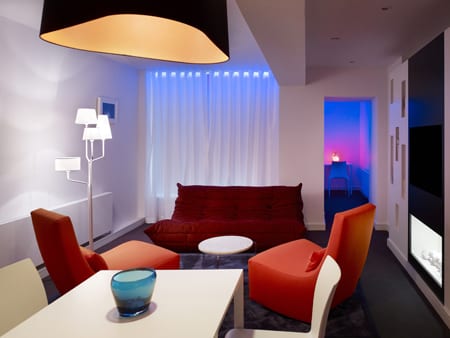Stumbling upon a restaurant like Caulfield’s, which appears as if it’s long been a part of the neighborhood landscape, is quite the challenge in Beverly Hills. “Everything is so overdone,” says restaurateur Ron Marino. “It’s either beige and gold or super slick.”
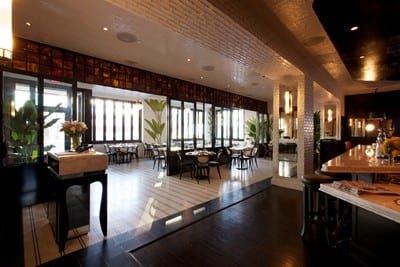
When Marino and partner Laurie Mulstay, the duo behind such Los Angeles lairs as Bar Chloe, The Bar, and Magnolia, were approached by Thompson Hotels’ Jason Pomeranc to open a restaurant at Thompson Beverly Hills, the entrepreneurs jumped at the opportunity. “Doing something in a hotel has always been a dream,” Marino points out.
Caulfield’s-yes, a nod to the literary hero-opened last fall flaunting an approachable menu of “comfort food with a twist” and a timeless look completely different from the space’s old incarnation as uber-modern Bond Street.
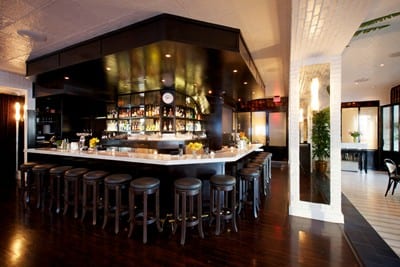
From the hand-punched metal light fixtures and mahogany wood paneling to the lacquered walls and massive mural depicting an ensemble of circa-1950 Hollywood personalities, Marino and Mulstay delved into every detail of the restaurant’s design. But they turned to New York- and LA-based Jim Walrod, who worked on both Thompson Gild Hall and LES properties, to help execute their vision. Walrod looked to renowned LA architect Paul R. Williams, whose 50-year career left a mark on such local fixtures as the Beverly Hills Hotel and LAX, for inspiration. “I wanted to use materials of that time period- the ’30s, ’40s, and ’50s-and make it feel a little more clubby,” he says.
Comprised of three spaces, a terrace, bar area, and dining room, Caulfield’s references New York, European and old world Beverly Hills glamour with lush plant life painted on white brick walls, burnt orange leather Pullman booths, white pinstriped tiles, and vintage wall sconces with frosted milk glass.
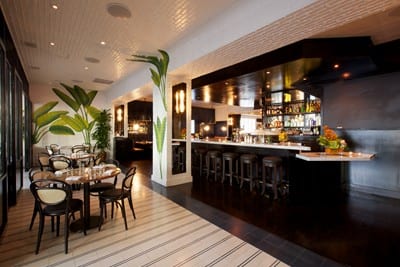
Creating a sense of community was paramount to Marino and Mulstay, and one way of accomplishing this was by moving the Carrera marble-topped bar to the center of the room, where it wraps its way into the dining room. “People want that sense of energy and connection,” says Marino, and Walrod notes, the dining room “feels more compressed and private as a result.”
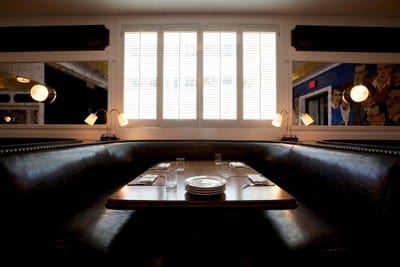
While Bond Street could only be accessed through the hotel, Marino thought it crucial to add an inviting entrance directly on bustling Wilshire Boulevard to attract locals: “If you’re always going through the hotel to eat, then it’s going to become just a restaurant in a hotel.”

